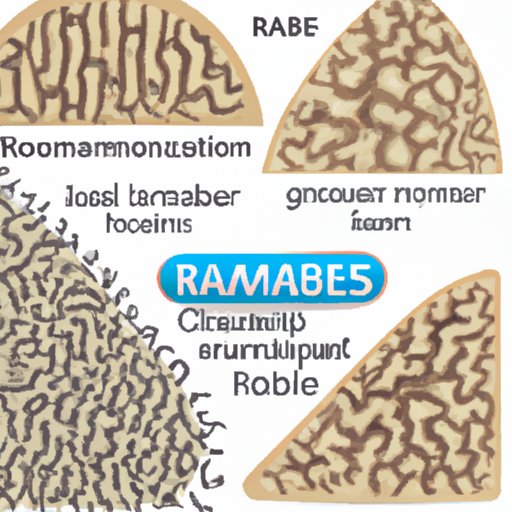Introduction
Razor bumps, also known as pseudofolliculitis barbae, are a common skin condition that occurs when hairs curl back on themselves and grow into the skin. This condition can be painful, uncomfortable, and unsightly, and it is often caused by improper shaving techniques. The purpose of this article is to provide advice to those who have encountered this problem, so they can learn how to prevent and treat razor bumps.
Discussing the Anatomy of Razor Bumps and What Causes Them
Razor bumps occur when the sharp edges of cut hairs curl back on themselves and grow into the skin. This can cause inflammation, redness, itching, and small bumps or lesions. Razor bumps can sometimes become infected, leading to more severe symptoms such as pus-filled bumps, pain, and scarring. The most common cause of razor bumps is improper shaving techniques, such as using a dull razor or not using enough lubrication.
In addition to improper shaving techniques, there are other factors that can contribute to razor bumps. These include thick, curly hair; coarse or dry skin; and irritated skin from waxing, tweezing, or threading. All of these factors can increase the chances of developing razor bumps, as the hairs are more likely to curl back into the skin.

Examining Commonly Used Razors and Products That Can Cause Razor Bumps
Using the wrong razor can also contribute to razor bumps. Disposable razors are often too sharp and can lead to irritation and ingrown hairs. Electric razors may be gentler on the skin, but they can still cause razor bumps if they are not used properly. It is also important to use the right products when shaving, such as a high-quality shaving cream or gel that is designed to reduce irritation.
In addition to using the right products, it is important to keep your razor clean and replace the blades often. Dirty razors can lead to bacteria buildup, which can cause infections and further irritation. It is also important to avoid using alcohol-based aftershaves, as these can dry out the skin and lead to further irritation.

Exploring Home Remedies for Preventing and Treating Razor Bumps
There are several home remedies that can help to prevent razor bumps. These include exfoliating regularly to remove dead skin cells, using warm water and a mild soap when shaving, and avoiding tight clothing that can irritate the skin. It is also important to shave in the direction of hair growth and avoid multiple passes over the same area.
If you already have razor bumps, there are several treatments that can help. Applying a cold compress to the affected area can help to reduce swelling and itching. Over-the-counter hydrocortisone cream can also be applied to the affected area to reduce inflammation. In severe cases, a doctor may prescribe an antibiotic or steroid cream to help reduce the symptoms.
Investigating Factors That Increase Risk of Razor Bumps, Such as Skin Type and Hair Texture
Some people are more prone to razor bumps than others due to their skin type and hair texture. People with thick, curly hair tend to be more prone to razor bumps, as the hairs are more likely to curl back into the skin. People with sensitive or dry skin are also more likely to develop razor bumps, as the skin is more easily irritated by shaving.
It is important to identify your skin type and hair texture in order to determine the best way to prevent razor bumps. If you have dry or sensitive skin, it is important to use a gentle shaving cream and avoid using too much pressure when shaving. For those with thick, curly hair, electric razors may be the best option, as they are less likely to cause irritation.

Evaluating Popular Skincare Products That Help Reduce Razor Bumps
There are many skincare products available that are specifically designed to reduce razor bumps. These include exfoliants, moisturizers, and creams that contain salicylic acid or glycolic acid. Exfoliants help to remove dead skin cells that can clog pores and lead to irritation. Moisturizers help to keep the skin hydrated and reduce inflammation. And products containing salicylic acid or glycolic acid can help to reduce inflammation and reduce the appearance of existing razor bumps.
It is important to research each product carefully before using it, as some may cause skin irritation or contact dermatitis. It is also important to read the instructions carefully and follow them closely in order to get the best results.
Conclusion
Razor bumps are a common skin condition that can be caused by improper shaving techniques, using the wrong razor, or using the wrong products. Those with thick, curly hair or sensitive skin are more likely to develop razor bumps. Fortunately, there are several home remedies and skincare products that can help to reduce razor bumps. It is important to identify your skin type and hair texture in order to determine the best way to prevent razor bumps, and to research any skincare product before using it.
By following these tips and taking the necessary precautions, you can reduce your risk of developing razor bumps. If you do develop razor bumps, there are treatments available that can help to reduce the symptoms. With the right knowledge and care, you can keep your skin looking and feeling its best.


